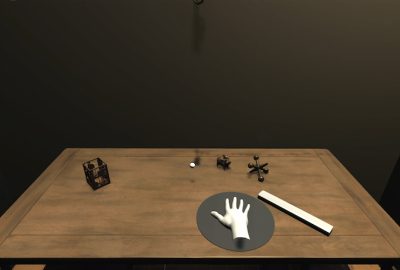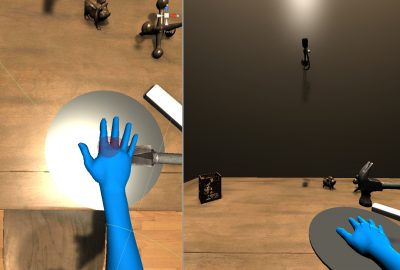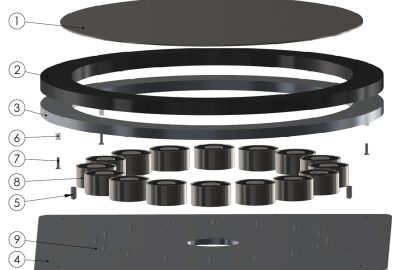“HapticWave: Directional Surface Vibrations using Wave-Field Synthesis” by Mehra, Hohnerlein, Perek, Gatti, DeSalvo, et al. …
Conference:
Experience Type(s):
Entry Number: 11
Title:
- HapticWave: Directional Surface Vibrations using Wave-Field Synthesis
Organizer(s)/Presenter(s):
Description:
Recent advances in haptic technology have focused on delivering haptic vibrations to the user’s hand, either through touched physical surfaces (or objects) with embedded haptic devices or through worn (or held) haptic feedback devices such as a gloves or controllers. In most of these devices, the sensation of touch is controlled by modulating either the intensity or frequency of the haptic actuation. One missing piece is a sense of direction. Our hands perceive haptic actuation over an area rather than at a single point; by using the subtle phase and amplitude differences in the vibrations felt over an extended surface, humans can detect the direction of haptic vibrations, in addition to their intensity and frequency. This added dimension of directional vibration has not received significant attention in the haptic literature.
HapticWave is a novel haptic technology that delivers directional haptic sensations generated on a flat surface to the user, without requiring him/her to wear a physical device. Combined with a virtual reality display and head-tracked spatial audio, HapticWave enables the user to perceive the direction, distance and intensity of events generated by a virtual object as it interacts with other objects in a virtual environment (tables, floors, etc.). HapticWave technology scales linearly with the dimension of the surface (rather than the surface area) enabling a scalable, efficient and practical surface haptic technology. HapticWave has a broad range of applications in many fields, including tabletop gaming, multi-user collaboration, enhanced movie experiences, and tactile perception research, among many others. In this emerging technology demonstration, we present the details of the HapticWave system, including the design, assembly and control, system calibration, and experimental results, along with the applications associated with surface haptic technology.
References:
Berkhout, A. J. 1988. A holographic approach to acoustic control. Journal of the audio engineering society 36, 12, 977–995.
Botvinick, M., and Cohen, J. 1998. Rubber hands ‘feel’ touch that eyes see. Nature 391 (Feb.), 756.
Filippi, P. 2008. Vibrations and acoustic radiation of thin structures: physical basis, theoretical analysis and numerical methods. ISTE.
Keyword(s):
- haptics
- wave-field synthesis
- directional vibrations
- 2016 ETech Mehra: HapticWave: Directional Surface Vibrations using Wave-Field Synthesis
- 2016 ETech Mehra: HapticWave: Directional Surface Vibrations using Wave-Field Synthesis
- 2016 ETech Mehra: HapticWave: Directional Surface Vibrations using Wave-Field Synthesis








